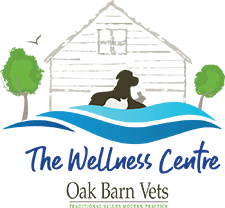The simple answer to this is yes!
Massage and stretching will help to free your pet of tension and knots. This means that they are comfortable, happy and will have increased overall strength and endurance, which is great if they are competing!
What are the benefits?
- Increased circulation
- Increased range of motion
- Enhancing performance and gait
- Providing comfort for musculoskeletal injuries
Traditionally massage therapy has been used as part of a treatment plan. Therapeutic massage is used within post-injury rehabilitation. This treatment enables the pet to return back to function sooner with less chance of re-injury and weakness of the affected area.
The aim of massage is to break down any adhesions and scar tissue that may have formed as a result of injury, as well as providing a fresh blood supply and also oxygen to the area, which will optimize the healing process. Your physio / therapist will work on the whole body of the animal. This is very important as it means that the patient can function in a balanced way and is less likely to use compensation tactics which mean that your horse will release any compensatory muscle tension that is linked with the original injury.
It is vital that massage is never be carried out on an area in the acute stage of injury, which is evidenced by heat or swelling. If this were to happen, it can cause greater tissue damage to the area as massage stimulates blood flow in turn increasing vasodilation.
To break this information down, essentially muscles are made of small muscle bundles, these bundles are made up of large amounts of muscle fibrils. When a muscle is built up, it is essentially creating lots of small ‘tears’ within the muscle fibres. These muscle tears will heal and replace themselves with scar tissue. This process can take up to 72 hours approximately to occur. This scar tissue, however, must be broken down in order to make the muscle flexible again.
Stretching and massage are proven to help this. Stretching will help the muscle return to its natural shape by increasing blood flow to the area, whereas massage will help the body’s connective tissue to become more elastic, which will allow the muscle to also return to its normal shape.
As we know, it is important that animals maintain a good, sound range of motion. If this doesn’t happen then there is an increased likelihood that other areas within their body will start to compensate in order to take up the extra load. This can continue for weeks, months or even years which will cause a constant wear and tear on the body. Over time this damage will cause ruptures, scar tissue as well as thickening and injuries to the tendons and ligaments within the body, inevitably causing great injury and discomfort.
A veterinary physiotherapist can get an insight to the severity and state of problem areas just touch and visual observation.
Under The Veterinary Surgeons Act 1966, only a Qualified and Registered Veterinary Surgeon may make a diagnosis. It is always highly advisable to have a veterinary consultation regarding any injury that your animal may have sustained. Although it is not always feasible for your veterinary surgeon to spend a few hours massaging and manipulating your animal, they may work with the veterinary physiotherapist in order to determine a diagnosis. A veterinary physiotherapist has been trained to help determine the cause of muscular problems and they can offer valuable information to your vet in order for them to establish a thorough diagnosis.



News & Updates